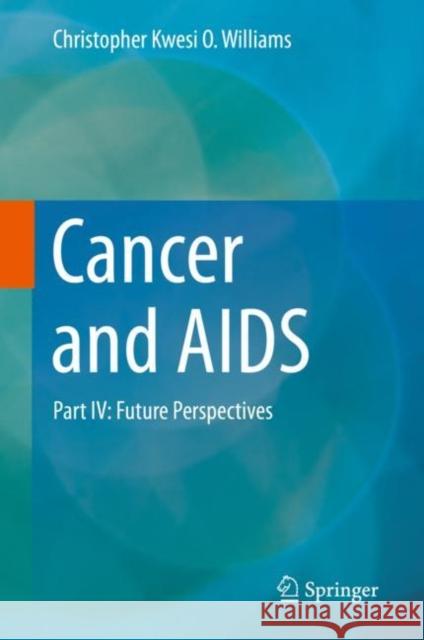Cancer and AIDS: Part IV: Future Perspectives » książka



Cancer and AIDS: Part IV: Future Perspectives
ISBN-13: 9783319992372 / Angielski / Twarda / 2019 / 45 str.
Cancer and AIDS: Part IV: Future Perspectives
ISBN-13: 9783319992372 / Angielski / Twarda / 2019 / 45 str.
(netto: 383,36 VAT: 5%)
Najniższa cena z 30 dni: 385,52
ok. 22 dni roboczych
Dostawa w 2026 r.
Darmowa dostawa!
As the low- and middle-income regions of the world transition from communicable to non communicable disease patterns, there is a need for a corresponding paradigm shift, with increased emphasis on what the world needs to know about non communicable diseases, including cancer, where the disease is hitherto poorly documented.
Part IV: Future Perspectives
Chapter 10 – Strategies for progress
Abstract
Section 10.1.0: The role of international partnership in the development of global health systems
Section 10.1.1: Models of humanitarian global outreach in health care
Section 10.1.2: The concept of “convergence” and the future of health care research
Section 10.1.3.0: The concept of global health
Section 10.1.3.1: Models of global health partnership in cancer control
Section 10.1.3.2: The tiered resource stratification framework of the Breast Health Global Initiative (BHGI) Network
Section 10.1.3.3: ASCO’s resource-stratified guidelines for the management of invasive cervical cancer
Section 10.1.3.4: NCCN framework for resource stratification for invasive cervical cancer
Section 10.1.3.5: Resource-stratified approaches in the primary prevention of cervical cancer
Section 10.1.3.5.1 ASCO resource-stratified guideline for the primary prevention of cervical cancer
Section 10.1.3.6: Resource-stratified approaches in the secondary prevention of cervical cancer
Section 10.1.3.4.1: Selected Global Health Activities for promoting cancer control/Health Volunteers Overseas (HVO)
Section 10.1.3.4.2 Global Curriculum and Mentoring Program
Section 10.1.3.4.3: Global Curriculum and Mentoring Program/International Development and Education AwardSection 10.1.3.4.4: Proposal for recognizing global oncology as an academic field
Section 10.2: Overcoming barriers to progress in the control of cancer and retroviral diseases, including HIV/AIDS
Section 10.2.1: Prioritizing strategies for universal health coverage
Section 10.2.1.1: mHealth Strategies for Universal Health CoverageSection 10.2.1.2: Community Health Insurance Coverage as a strategy for Universal Health Care
Section 10.2.1.3: Innovation in provider training as a strategy in UHC
Section 10.2.2: The role of politics in attainment of Universal Health Coverage
Section 10.2.3: The role of science and engineering in human welfare
Section 10.2.3.1: The role of science
Section 10.2.3.1.1: Science advocacy
Section 10.2.3.1.2: Science education in low- and middle-income countries
Section 10.2.3.1.3 Examples of the transforming effect of science in LMICs
Section 10.2.3.1.3.1 Impact of science on the emergence of South Korea
Section 10.2.3.1.3.2: Impact of science on Middle-Eastern cooperation
Section 10.2.3.1.3.3: Impact of the US-Cuba scientific diplomacy
Section 10.2.3.1.3.4: Boosting science in Singapore
Section 10.2.3.1.3.5: India boosts its ambitious space program
Section 10.2.3.2: Transforming the practice of engineering to meet global health needs
Section 10.2.3.3 Models in innovation with potentials for cancer and HIV/AIDS control in LMICs
Section 10.2.3.3.1: Affordable, weather durable x-ray machine
Section 10.2.3.3.2: Affordable cancer immunotherapy in Cuba
Section 10.2.3.3.3: The smart village for rural electrification
Section 10.2.3.3.4: HIV/AIDS control in China
Section 10.3: The future of control of cancer and retroviral diseases
Page 1055: Section 10.3.1: From the National Cancer Act to the 21st Century Cures Act
Page 1059: Section 10.3.2: Advances in lung cancer prevention
Page 1062: Section 10.3.3: Ending the HIV/AIDS pandemic
Page 1063: Section 10.3.4: Finding a cure for AIDS – a possible convergence of cancer and HIV/AIDS research
IndexThis series of books is about the nature of cancer and retroviral diseases, including AIDS, their presentation and the challenges associated with their control, especially in the low- and middle-income countries. Anxiety about these diseases is a global phenomenon, and so also is the confusion about their origins. Studies of Egyptian mummies in paleopathology have documented the ancient occurrence of cancer, but not for AIDS and allied disorders, for which a role of modern lifestyle is more likely. These diseases share a background of worldwide variability of opulence and poverty, rather than heredity, in their manifestation and control.
This book covers prospect of universal dissemination of the good news of advances in cancer and HIV/AIDS control, regardless of the prevailing stage of human development in parts of the world. The role of international partnerships in education, research and training, and promotion of appreciation of science as driving force for change in all societies is reviewed and emphasized.
Much of the information on oncology concentrates on the nature of the disease in the in developed countries, where emphasis tends to be on adult cancers, and less so on those of childhood and adolescence, an important population group in countries of limited resources. Furthermore, much of the available cancer control information reflects expensive and often-unaffordable curative practices of well-endowed nations, rather than public health approaches, which may be more relevant and appropriate for much of the rest of the world.
This book is the work of an extensively traveled oncologist and human retrovirology enthusiast with an international educational and professional background in resource poor and developed countries, who therefore, is able to compare and contrast health related observations and challenges in diverse settings.
Practicing and academic physicians in the emerging economies of Eastern Europe, Asia, South America and Africa, who are facing the challenge of cancer and AIDS as their populations transition from traditional to more affluent lifestyles, will find this series of books particularly informative. Oncologists, retrovirologists and others in developed countries, who are concerned about the global impact of cancer and AIDS, and are promoting related global health interventions, should read this collection, the topic of which is also relevant to officials of international agencies and resource-limited national public health policy units.
1997-2025 DolnySlask.com Agencja Internetowa
KrainaKsiazek.PL - Księgarnia Internetowa









